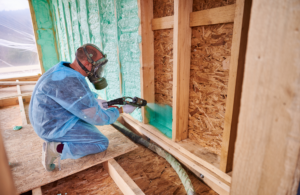A solid SEO strategy is essential for promoting a business. You don’t need to be an expert to make it work. Follow these easy SEO tips, and you’ll be well on your way to success.
SEO is optimizing web pages to increase their visibility in search engines like Google. It focuses on organic (non-paid) results. Click Here to learn more.

Keywords are one of the most important elements of any SEO campaign. They determine what search engine users are looking for and help you find the right content to produce. But how do you choose the best keywords? The answer depends on your marketing goals. You want to choose relevant keywords that can be easily incorporated into your content. However, you should be careful not to add too many keywords, as it may reduce your search engine ranking.
Choosing the right keywords is essential to SEO, but it’s not enough. You also need to incorporate them into your content in a way that is natural and beneficial for the user. Keywords should be placed naturally in the text, and they should be incorporated into other SEO elements, such as meta descriptions, URLs, and titles. The keyword should also appear in the title of your page, and you should try to place it near the beginning if possible. You should also include the keyword in your meta description, which is a short snippet of text that appears under your title and URL on a search engine result.
Another important aspect of SEO is the quality of your content. In addition to keywords, search engines look for websites that provide a good experience for their users. This means that your website should be easy to navigate and have a clear structure. It should also have a high-quality, natural tone and a clear call to action.
Finally, you should keep an eye on your keyword trends. As search trends change, your keywords will likely need to be adjusted as well. Keeping track of your keywords will ensure that you’re using the most up-to-date information to develop your SEO strategy.
In order to create a successful SEO strategy, you must know your audience. You must be able to understand what people are searching for and how they are doing it. This is important because it will help you determine the most effective keywords to use. You will need to use the keywords that reflect your audiences’ intent and are relevant to what you offer.
On-page optimization
In order to rank higher in search engine results pages (SERPs), it’s important that your website’s content is optimized. This is known as on-page optimization, which refers to the process of optimizing a web page’s title tags, content, internal links, and URLs. On-page optimization can be done manually or using a tool like Semrush.
On-page SEO has evolved a lot over the last few years. It’s no longer enough to cram your keywords into your titles and meta tags. It’s important to ensure that your content meets users’ needs and provides a good experience. This will help you achieve better rankings, and ultimately more traffic.
A few key aspects of on-page optimization include incorporating your keyword into your title tag and content, using headers in your content (H1, H2, H3, etc.), and using a site map. You should also try to reduce your site’s load time and make sure that it is mobile-friendly.
Another important aspect of on-page SEO is keyword research. This includes researching relevant search terms and determining how competitive they are. It’s also important to consider local search factors when conducting keyword research. This will help you target your audience and improve your chances of ranking locally.
On-page optimization is a vital part of any SEO strategy. However, it can be difficult to get started without the right tools. Luckily, there are several free tools available to help you optimize your content and website. One such tool is On Page SEO Checker, which can analyze your page and provide ideas for improvements. Another tool is Google Page Speed Insights, which can identify specific issues that might be slowing down your page. Once you’ve implemented these tools, you’re ready to begin analyzing your pages. It’s also a good idea to set up a calendar to keep track of your progress. This will help you stay on top of your goals and prevent you from falling behind. Finally, be sure to check back periodically to see if your strategies are working. If they aren’t, it may be time to try a new approach.
Link building
Link building is an important part of any SEO strategy. It involves creating links to your website from other websites. These links are referred to as backlinks and are an important factor in Google’s ranking algorithm. However, there’s a right way and a wrong way to do link building, and the wrong way can get your site penalized by search engines. The best approach is to use natural links that have been built organically over time, rather than using black-hat techniques like link buying or other manipulative tactics (often referred to as “black hat SEO”).
One of the most effective methods of link-building is to create high-quality content. This includes writing in-depth articles and blogs that are relevant to your audience and industry. This will help you rank higher in search results and attract more links from authoritative sources. Another effective method is to conduct competitor research. This involves looking at what your competitors are doing and identifying opportunities for improvement. For example, if your competitors write about a new industry development, but fail to provide any details about how it works, you can write an in-depth article explaining the topic and include videos and photos. This will help you position yourself as an expert in the field and encourage people to link to your site.
Another important aspect of link building is to target authority sites and blogs in your niche. A good way to find these sites is by conducting a keyword search on Google. You can also use social media and email to promote your content. You should also monitor your SEO rankings to see if your content is improving in SERPs. Ideally, you want to see your star content pieces ranking within the top 3-5 search positions.
It’s also important to avoid black hat link-building practices, which can be dangerous to your website and business. These practices include buying links from low-quality websites, using spammy anchor text, and other manipulative strategies. Black hat strategies may give you short-term results, but they can ultimately damage your ranking and hurt your brand.
Content creation
Content creation is an important part of any business or brand’s marketing strategy. Whether it’s blog posts, infographics, videos, or social media updates, great content can help you build your audience, attract more visitors, and ultimately achieve your business goals. However, creating high-quality content requires time and effort. You need to know your target audience, what keywords they’re using, and how to optimize your content for search engines.
While great content is a key element of SEO, it won’t do much good if nobody can find it. This is where SEO comes in: by identifying the best keywords and phrases to use in your content, you can improve your visibility on search engine results pages (SERPs) and drive relevant traffic to your website.
To create SEO-friendly content, it’s crucial to have a clear content brief that outlines the specifics of your project and what you expect from your writers. This will ensure that everyone involved understands the content’s objective, audience, and proper messaging. Additionally, it can also help you avoid duplicate content and ensure that your keywords are being used in the most effective way.
In addition to creating quality content, you also need to optimize your website’s technical aspects. This includes ensuring that your content is mobile-friendly and has quick page load times. It also involves incorporating your keywords naturally into your titles and descriptions to boost your chances of becoming a featured snippet in search results.
Finally, you must regularly monitor your content to ensure that it’s driving the results you expect. This might not seem like a part of content creation, but it’s essential for measuring your ROI and optimizing your future content strategies. By following these simple tips, you can create and implement a successful SEO content strategy that will drive traffic to your site and help you achieve your business goals.






